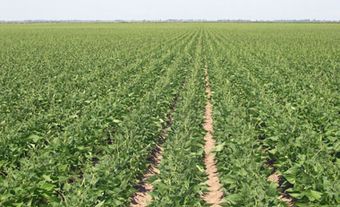Pesticide
Substances used to control pests include insecticides (for control of insects), fungicides (for disease-causing fungi), herbicides (for weeds), rodenticides (for rodents), avicides (for birds), piscicides (for fish) and nematicides (for nematodes). Insecticides, fungicides and herbicides are the most widely used. More than 400 pesticides are now registered for use in Canada; they are formulated as liquids, dusts, wettable powders, aerosols and granules.
Pesticides include a wide range of synthetic and natural substances. Relatively few pesticides existed before WWII: insecticides were primarily salts of arsenic, or fluorine or plant-derived products such as nicotine, pyrethrum and rotenone; fungicides were primarily based on mercury, copper or sulphur; herbicides included petroleum oils, sulphuric acid, some arsenites and salt. After WWII, many synthetic compounds became available, the first of these being DDT for insect control, the phenoxy herbicides (eg, 2-4-D) for weed control, and captan and a series of dithiocarbamates for control of fungal diseases of plants.
Toxicology
Pesticides now available differ widely in their toxicity to different forms of life. The term LD50, used to indicate lethal toxicity, refers to the dosage of the pesticide (expressed as milligrams per kilogram of body weight) required to kill 50% of a test population. The RAT is the most common mammal used for determining LD50 values but the MOUSE and the RABBIT are also usually tested. Modern pesticides are tested for a wide variety of toxic effects before they may be used. These tests include those for carcinogenicity (tumour formation), teratogenicity (birth defects) and mutagenicity (genetic damage). Other tests include studies on the environmental fate of the chemicals and effects on wildlife and other non-target organisms.
Many pesticides are selective in their toxicity, being highly toxic to some organisms and much less so to others. Within a class of compounds, however, toxicity varies widely, from 10 or fewer milligrams per kilogram to several thousand mg/kg.
The nature of the toxicity of pesticides differs between different classes of substances. In general, insecticides are more toxic to warm-blooded animals than herbicides or fungicides, but some of the older fungicides, such as mercury and the arsenite herbicides, are also highly toxic to mammals and birds. Many insecticides act on the nervous system of insects and, although less toxic to warm-blooded animals, act on the nervous system of these organisms as well. Some newer classes of insecticides have been developed that act on processes found in insects but not in mammals, eg, compounds that interfere with the molting process in insects or that affect hardening of the cuticle.
With the exception of mercury, most of the fungicides are not very toxic to warm-blooded animals because they are toxic to systems in fungi that are quite different from those found in mammals and birds. This is true also of most herbicides. Over time, target species develop resistance to specific pesticides and dosages have to be increased or new pesticides developed. New pesticides now under development will likely be of biological origins. Through genetic engineering, it has been possible to produce plants which synthesize their own insecticides and are thus protected from insects.
Registration and Use
Because pesticides are toxic, their use is carefully controlled and, in Canada, pesticides may be sold only after they have been registered by Agriculture Canada. The registration process is comprehensive and includes a review of the toxicology of the product, a demonstration that the product is effective for the pest for which it is intended, and the nature of the treatment needed to control the problem. The registration process permits a pesticide to be registered only for specific uses, which are detailed on the label that accompanies the pesticide when it is sold.
One or more of the many pesticides available are used on practically every CROP grown in Canada and the use, particularly of herbicides, is increasing rapidly each year. Insecticides are also used widely to control insects around the home and for control of MOSQUITOES, BLACK FLIES and pests on livestock. Fungicides are used extensively in building materials, paint and disinfectants, and for the treatment of timbers (eg, railway ties, telephone posts) to prevent decay.
Problems
Although pesticides have been widely adopted by Canadians for pest control, a number of concerns have been raised. In the 1950s and early 1960s, a number of environmental problems were found to be related to the extensive use of pesticides. These problems included contamination of water with resulting fish kill; reproductive effects in birds (eg, the PEREGRINE FALCON); and direct toxicity to birds and other non-target animals in areas where large-scale spraying operations were carried out. Other concerns have focused on the prescence of toxic contaminants (such as the dioxins) in some types of pesticides. Research identified the problem pesticides and these have been restricted in use or banned.
More recently, concern has been expressed that pesticides may cause long-term health effects in man and there is controversy about whether or not they should be used. There is little evidence that the pesticides now in use are likely to cause significant health effects when used properly and each is extensively tested for long-term effects before it is registered. Prudence dictates, however, that all pesticides be used with caution and that care be taken to avoid overexposure.

 Share on Facebook
Share on Facebook Share on X
Share on X Share by Email
Share by Email Share on Google Classroom
Share on Google Classroom




